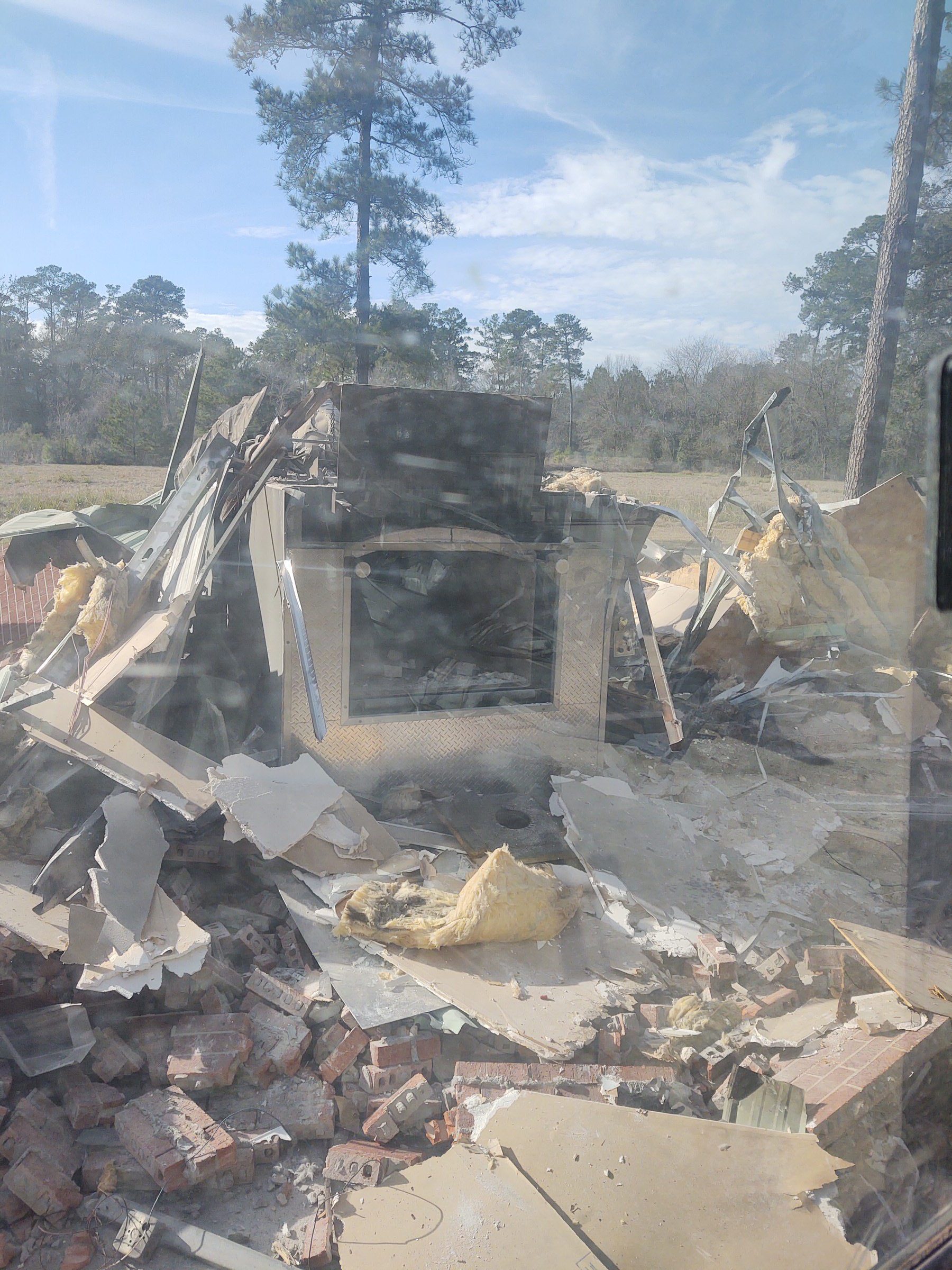Regulatory Debate on Chemical Recycling and its Alignment with Sustainable Development Goals
Executive Summary
A significant regulatory debate is underway concerning the classification of chemical recycling technologies, specifically pyrolysis. Industry advocates are pushing for its classification as a manufacturing process to foster innovation and economic growth, aligning with certain Sustainable Development Goals (SDGs). Conversely, environmental organizations and regulatory bodies express concerns over potential health and environmental impacts, advocating for stricter controls under waste management frameworks. This report analyzes the conflict through the lens of the SDGs, examining the recent U.S. Environmental Protection Agency (EPA) ruling and the divergent stakeholder perspectives.
Regulatory Status and Environmental Governance
The EPA’s recent actions have intensified the debate over how chemical recycling aligns with national environmental standards and global sustainability commitments.
- EPA Final Rule: On June 30, the EPA published a final rule on air emissions for small solid waste incinerators. The agency declined to create a regulatory carve-out for pyrolysis units, a move previously proposed during the Trump administration.
- Classification under the Clean Air Act: Consequently, certain pyrolysis units remain classified as “municipal waste combustion units.” This classification subjects them to emissions standards designed for waste incineration, a measure that supports SDG 3 (Good Health and Well-being) by regulating air pollutants.
- Unresolved Future Regulation: The EPA has indicated it will continue to develop regulations for pyrolysis, leaving persistent uncertainty for the industry. This ongoing ambiguity affects long-term planning for achieving SDG 12 (Responsible Consumption and Production).
Industry Position: An Engine for Sustainable Growth and Innovation
Industry groups contend that classifying chemical recycling as manufacturing is essential for advancing a circular economy and achieving key economic and industrial SDGs.
- Contribution to SDG 9 (Industry, Innovation, and Infrastructure): The Plastics Industry Association (Plastics) and the American Chemistry Council (ACC) argue that advanced recycling is a cutting-edge manufacturing process. They posit that it strengthens domestic supply chains and positions the U.S. as a leader in sustainable manufacturing technology.
- Advancing SDG 8 (Decent Work and Economic Growth): Proponents claim that re-manufacturing plastic through these technologies creates American jobs and stimulates economic activity.
- State-Level Legislative Success: The ACC has actively lobbied at the state level. To date, 25 states have passed legislation defining advanced recycling as a manufacturing process, with similar bills under consideration in Nebraska and North Carolina. This demonstrates a multi-level governance approach to fostering what the industry views as sustainable innovation.
Environmental Concerns and Opposition
Environmental organizations maintain that reclassification is a tactic to bypass necessary environmental safeguards, undermining progress toward several SDGs.
- Threats to SDG 3 (Good Health and Well-being) and SDG 11 (Sustainable Cities and Communities): Groups like Beyond Plastics and Earthjustice argue that chemical recycling facilities can release hazardous air and water pollutants, posing risks to community health. They contend that classifying these facilities as manufacturing rather than incineration allows them to operate under less restrictive environmental regulations.
- Questioning Contributions to SDG 12 (Responsible Consumption and Production): Critics challenge the scalability and overall environmental benefits of chemical recycling, suggesting its role in a circular economy is overstated. Legislative efforts, such as a proposed provision in New York’s extended producer responsibility (EPR) bill to exclude chemical recycling from official recycling counts, reflect this skepticism.
Investment and Path Forward
Despite the regulatory and political battles, investment in chemical recycling infrastructure continues, signaling market confidence in the technology’s potential.
- Continued Project Development: New facilities are being established, such as ExxonMobil’s second advanced recycling unit in Baytown, Texas, which has garnered support from state and business leaders.
- A Contested Route to Sustainability: The ongoing conflict highlights a fundamental tension in achieving the SDGs. The path forward requires balancing the drive for industrial innovation and economic benefits (SDG 9, SDG 8) with the imperative to protect public health and ensure genuinely responsible production and consumption patterns (SDG 3, SDG 12). The resolution of this debate will significantly shape the future of plastic waste management and the circular economy in the United States.
Which SDGs are addressed or connected to the issues highlighted in the article?
- SDG 8: Decent Work and Economic Growth: The article connects the development of chemical recycling to economic benefits, such as creating American jobs and strengthening domestic supply chains.
- SDG 9: Industry, Innovation, and Infrastructure: The core of the article discusses an industrial process (chemical recycling/pyrolysis) as a technological innovation for waste management and manufacturing, involving investments in new infrastructure like the ExxonMobil facility in Texas.
- SDG 11: Sustainable Cities and Communities: The debate is linked to the management of municipal solid waste (MSW), as the EPA rule applies to MSW incinerators. Proper waste management is crucial for the environmental health of cities.
- SDG 12: Responsible Consumption and Production: The article is fundamentally about managing plastic waste. The debate over whether chemical recycling is a valid “recycling” method or “incineration” directly relates to achieving sustainable production patterns and reducing waste generation.
- SDG 13: Climate Action: The discussion revolves around the EPA’s Clean Air Act and air emissions standards for pyrolysis units. Regulating emissions from industrial processes is a key component of climate action.
- SDG 16: Peace, Justice, and Strong Institutions: The article highlights the role of a key institution, the Environmental Protection Agency (EPA), in setting regulations. It also shows the legislative process at the state level and the influence of various groups, reflecting the dynamics of institutional decision-making.
- SDG 17: Partnerships for the Goals: The issue involves a multi-stakeholder dialogue between government bodies (EPA), industry associations (American Chemistry Council, Plastics Industry Association), private corporations (ExxonMobil), and environmental groups (Beyond Plastics, Earthjustice).
What specific targets under those SDGs can be identified based on the article’s content?
-
SDG 8: Decent Work and Economic Growth
- Target 8.2: Achieve higher levels of economic productivity through diversification, technological upgrading and innovation. The article presents chemical recycling as a “technological upgrading” and “advanced technology” intended to create value from waste plastic, thereby contributing to economic productivity and job creation.
-
SDG 9: Industry, Innovation, and Infrastructure
- Target 9.4: By 2030, upgrade infrastructure and retrofit industries to make them sustainable, with enhanced resource-use efficiency and greater adoption of clean and environmentally sound technologies and industrial processes. The push to reclassify chemical recycling as “manufacturing” and not “incineration” is framed as an effort to promote a sustainable, “environmentally sound” technology to manage plastic waste and create a “resilient and sustainable manufacturing” sector.
-
SDG 11: Sustainable Cities and Communities
- Target 11.6: By 2030, reduce the adverse per capita environmental impact of cities, including by paying special attention to air quality and municipal and other waste management. The article directly addresses this by focusing on EPA regulations for air emissions from “municipal waste combustion units” and the broader issue of managing plastic waste, which is a major component of municipal solid waste.
-
SDG 12: Responsible Consumption and Production
- Target 12.4: By 2020, achieve the environmentally sound management of chemicals and all wastes throughout their life cycle… and significantly reduce their release to air, water and soil to minimize their adverse impacts on human health and the environment. The entire debate over emissions standards and the potential for “air and water quality hazards” from chemical recycling facilities is central to this target.
- Target 12.5: By 2030, substantially reduce waste generation through prevention, reduction, recycling and reuse. The article discusses chemical recycling as a potential method to “recycle” plastic waste, which, if successful, would contribute to this target. The debate in New York over whether to count it as recycling highlights its relevance.
-
SDG 16: Peace, Justice, and Strong Institutions
- Target 16.6: Develop effective, accountable and transparent institutions at all levels. The article showcases the EPA’s role in creating and finalizing rules, demonstrating the function of a national regulatory institution. The back-and-forth between administrations shows the evolving nature of this institutional process.
Are there any indicators mentioned or implied in the article that can be used to measure progress towards the identified targets?
- Number of states with specific legislation: The article states that “at least 25 states have adopted some version of this legislation” to classify chemical recycling as manufacturing. This is a quantifiable indicator of policy adoption related to Target 12.5 and 9.4.
- Investment in new facilities: The mention of continued investments and the specific example of “ExxonMobil announced its second chemical recycling unit was up and running in Baytown, Texas” serves as an indicator of the growth of infrastructure for this technology (Target 9.4).
- Regulatory emission limits: The article refers to the EPA rule applying to “MSW incinerators that combust less than 35 tons per day.” This specific tonnage is a quantitative indicator used in environmental regulation to manage air quality and waste (Target 11.6).
- Number of jobs created: The industry’s claim that these technologies “create American jobs” implies that the number of jobs in this sector could be used as an indicator for progress towards Target 8.2.
Table of SDGs, Targets, and Indicators
| SDGs | Targets | Indicators |
|---|---|---|
| SDG 8: Decent Work and Economic Growth | 8.2: Achieve higher levels of economic productivity through technological upgrading and innovation. | Number of jobs created in the advanced recycling sector. |
| SDG 9: Industry, Innovation, and Infrastructure | 9.4: Upgrade infrastructure and retrofit industries to make them sustainable…and adopt clean and environmentally sound technologies. | Number and capacity of new chemical recycling facilities being built and invested in (e.g., ExxonMobil’s Baytown unit). |
| SDG 11: Sustainable Cities and Communities | 11.6: Reduce the adverse per capita environmental impact of cities, paying special attention to air quality and municipal waste management. | Specific regulatory thresholds for emissions from waste facilities (e.g., limits for incinerators combusting less than 35 tons per day). |
| SDG 12: Responsible Consumption and Production | 12.5: Substantially reduce waste generation through recycling. | Number of states adopting legislation to define and regulate new forms of recycling (e.g., 25 states have adopted such legislation). |
| SDG 16: Peace, Justice, and Strong Institutions | 16.6: Develop effective, accountable and transparent institutions at all levels. | Finalization and publication of rules by government bodies like the EPA (e.g., the final rule on air emissions standards). |
Source: wastedive.com







